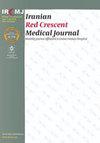Efficacy and Safety of Immediate Latissimus Dorsi Breast Reconstruction after Breast Cancer Surgery
IF 0.2
4区 医学
引用次数: 0
Abstract
Background: Most traditional breast reconstruction surgeries require the removal of the patient's own tissue or the use of artificial implants for reconstruction. The improvement of the efficiency and safety of breast reconstruction surgery assumes critical importance for the rehabilitation of breast cancer patients. Immediate latissimus dorsi breast reconstruction surgery, which utilizes the patient's own tissue to perform immediate reconstruction, can address this issue in a targeted manner, avoiding the cumbersome and complex nature of multiple surgeries. Objectives: To analyze the efficacy and safety of immediate latissimus dorsi breast reconstruction (BR) after breast cancer surgery. Methods: A total of 91 female patients with breast cancer diagnosed and treated by breast surgery in our hospital from August 2017 to July 2021 were retrospectively analyzed. The patients were assigned to the prosthetic implant group (n=39) and latissimus dorsi group (n=52) according to the method of immediate postoperative BR. The difference in curative effect can be analyzed by comparing the operation time, intraoperative bleeding, postoperative drainage time, and aesthetic evaluation of BR. The safety of postoperative BR was analyzed by comparing the postoperative complications, local recurrence rate, distant metastasis rate of breast cancer, and rehabilitation rate. Results: There was no dramatic difference in intraoperative bleeding, postoperative drainage time, and rehabilitation rate between the latissimus dorsi and prosthetic implantation groups (P>0.05). Nonetheless, there was a significant difference in operation time, aesthetic evaluation of BR, postoperative complications, local recurrence rate, and distant metastasis rate of breast cancer in the latissimus dorsi group than the prosthetic implant group(P<0.05). In general, the latissimus dorsi group exhibited better therapeutic effects. Conclusion: Immediate latissimus dorsi BR dramatically affects postoperative breast repair of breast cancer patients and is safer than prosthesis implantation. As an evaluation of their safety and effectiveness, it is necessary to provide patients with more stable and reliable medical outcomes to ensure their surgical safety.乳腺癌术后即刻背阔肌乳房再造的有效性和安全性
背景:传统的乳房再造手术大多需要切除患者自身组织或使用人工植入物进行再造。提高乳房再造手术的效率和安全性对乳腺癌患者的康复至关重要。即刻背阔肌乳房重建手术利用患者自身组织进行即刻重建,可以有针对性地解决这一问题,避免多次手术的繁琐和复杂。 研究目的分析乳腺癌术后即刻背阔肌乳房再造术(BR)的有效性和安全性。 方法回顾性分析2017年8月至2021年7月在我院经乳腺外科诊治的乳腺癌女性患者共91例。根据术后即刻BR的方法将患者分为假体植入组(n=39)和背阔肌组(n=52)。通过比较手术时间、术中出血量、术后引流时间和 BR 的美学评价,分析治疗效果的差异。通过比较术后并发症、局部复发率、乳腺癌远处转移率和康复率,分析术后 BR 的安全性。 结果显示背阔肌植入组和假体植入组在术中出血量、术后引流时间和康复率方面没有显著差异(P>0.05)。然而,背阔肌组与假体植入组在手术时间、BR美学评价、术后并发症、乳腺癌局部复发率和远处转移率方面均有显著差异(P<0.05)。总体而言,背阔肌组的治疗效果更好。 结论即刻背阔肌BR对乳腺癌患者的术后乳房修复效果显著,且比假体植入更安全。作为对其安全性和有效性的评估,有必要为患者提供更稳定可靠的医疗结果,以确保其手术安全。
本文章由计算机程序翻译,如有差异,请以英文原文为准。
求助全文
约1分钟内获得全文
求助全文
来源期刊

Iranian Red Crescent Medical Journal
医学-医学:内科
自引率
0.00%
发文量
0
期刊介绍:
The IRANIAN RED CRESCENT MEDICAL JOURNAL is an international, English language, peer-reviewed journal dealing with general Medicine and Surgery, Disaster Medicine and Health Policy. It is an official Journal of the Iranian Hospital Dubai and is published monthly. The Iranian Red Crescent Medical Journal aims at publishing the high quality materials, both clinical and scientific, on all aspects of Medicine and Surgery
 求助内容:
求助内容: 应助结果提醒方式:
应助结果提醒方式:


